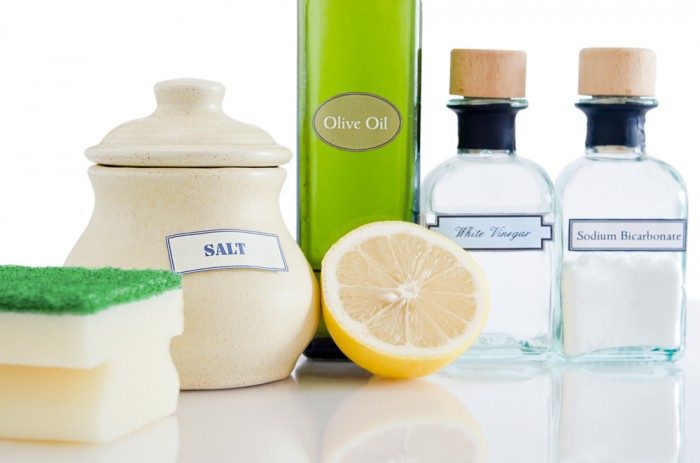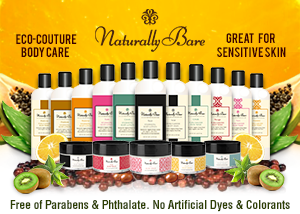12 DIY Green Cleaning Recipes That Work

I know you’re busy. I’m busy, too. That’s why I make many of my own household cleaning products. It saves me time. It saves me money. It only takes a few basic ingredients. And it leaves my house smelling fresh and natural, as a healthy home should.
Because they’re made of mild, biodegradable ingredients, make-it-yourself cleaners may take a little longer to do the job, or require a bit more elbow grease, but these recipes really work. More important, they won’t redden your hands, give you a headache, or leave you feeling dull and fatigued like some commercial products do.
You can make your own household products with ingredients you probably already have in your cupboard—baking soda, distilled white vinegar, lemons, salt, vegetable-based soap (like Castile), rubbing alcohol, and club soda. Try a few of these recipes and see if they work for you.
Bathrooms
Although bathrooms are particularly susceptible to mold, mildew, and harmful bacteria, to get a bathroom truly clean you don’t need industrial disinfectants, chlorine bleaches, and other dangerous chemicals. Plant-based cleaners and essential oils with antiseptic properties (like tea tree and eucalyptus) are smart alternatives. Here’s how I clean my bathroom:
- Shower stalls, countertops, mirrors: Add ½ cup distilled white vinegar to two cups water in a spray bottle. Spray and wipe down. Keeps for months.
- Toilet: Sprinkle baking soda in the toilet and swish with a toilet brush. Flush. Then spray 100% vinegar in the bowl, being sure to get under the rim. Clean with the brush and flush. Be careful not to mix baking soda with vinegar. The combination creates a powerful chemical reaction.
- Sink and tub: Sprinkle baking soda in the sink and tub, wash with a wet sponge, rinse well. If baking soda doesn’t work well enough for you, purchase a green scouring product, like Bar Keepers Friend.
- Soft scrub: Mix ½ cup baking soda with enough liquid Castile soap (or any vegetable-based soap) to blend into a creamy paste. Use a sponge to apply and clean. Rinse surface well.
- Mildew remover: A spray made from one drop of tea tree oil to one cup of water will help clean up most mold and mildew problems. Keep the solution handy in a spray bottle; it should last for months. A simple vinegar spray (a half cup distilled white vinegar to one cup water) is also effective and has a less intense scent. Proper ventilation and dehumidifiers can reduce or eliminate the growth of mildew and mold.
All Around the House
- Air freshener: Put some cloves in a pan of water and simmer it on the stove. For bathroom odors, a simple lit match often does the trick.
- Disinfectant: Vinegar is a good natural disinfectant, as is tea tree oil. But if you have newborns or immuno-suppressed family members who need microbiocidal action, a registered disinfectant is called for.
- Drain cleaner: Dissolve fatty, greasy clogs by mixing a ½ cup of baking soda and one cup distilled white vinegar in boiling water. Pour the solution down the drain and cover with a drain plug for several minutes. Flush with tap water until it clears.
- Fabric softener: Add ¼ cup white distilled vinegar to your washing machine’s wash cycle.
- Oven: Commercial oven cleaners are among the most dangerous household cleaning products. Prevention comes first. Line the bottom of the oven with aluminum foil, under but not touching the heating element (if the oven is electric). When spills occur, simply replace the foil. Or clean up spills as they occur: Let the oven cool, sprinkle sale on the spill, then wipe away the spill and wash the area clean. To clean a badly crusted oven, sprinkle it with baking soda and spray with water. Allow it to sit several hours or overnight. Scrape off the baking soda and spray with water. Allow it to sit several hours or overnight. Scrape off the stains and spills, then thoroughly wash oven with hot water.
- Windows: Try spraying club soda on the glass and wipe with a clean linen towel. Or clean with two teaspoons distilled white vinegar in one quart of warm water.
- Hardwood floors: Add ¼ cup distilled white vinegar to one gallon of warm water. Mix in a pail and mop. Rinse with water. Don’t leave large pools to water to dry. Leaves floors sparkling. I never wax my floors.
- Wood polish: Olive oil mixed with a bit of lemon juice polishes wood to a sparkling glow.
Homemade cleaners leave your house smelling fresh and clean. You can even tailor the scent, adding your favorite essential oils or fragrant hand-picked herbs. With make-it-yourself recipes, timely tips, and no-fail tricks, you’ll find cleaning with homemade recipes to be an easy step to achieving a natural, green home.
BIO
Linda Mason Hunter is a pioneer in America’s green movement. Among her 13 books are The Healthy Home: An Attic-To-Basement Guide (published in 1989), Green Clean (2005), and Three Green Rats, An Eco Tale (2012, for ages 7 to 11 “and precocious adults”). See www.threegreenrats.com and www.hunterink.com.



May 6th, 2014 at 5:40 pm
[…] from Green Cleaning Magazine […]
July 23rd, 2014 at 3:59 am
Add 4 ounces of tri-sodium phosphate which is commonly
known. If you want to completely remove black mold from your home and make it safe
for your family, there are some steps that you need to
take. To do this, use all three of these natural green methods.